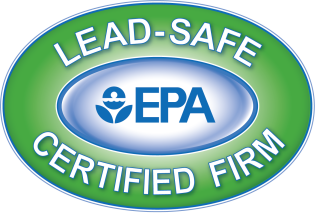Chances are if you’re looking into ‘DIY attic mold removal’ you already have mold. You may be wondering, how did the mold get here, and how do I stop it?! Can I do it myself or do I really need professional help? We answer all your questions and more.
DISCLAIMERS:
Blog information is NOT intended to provide or replace medical advice. NO information on this site should be used to diagnose, treat, prevent or cure any disease or condition.
*As an Amazon Associate we earn from qualifying purchases.
Suggestions for products to use are just that, suggestions. You know yourself and your home best. Please do your own research on any product you use in your home or on your skin, and learn all the facts for yourself. Thank you.
WHERE DID THE ATTIC MOLD COME FROM?
Molds grow from microscopic spores that are everywhere in the air. Molds are found everywhere in nature, including your attic, and are important for recycling organic matter (such as leaves). The recycling process they perform returns nutrients to the soil and is important for plants to grow. Attics have all the things mold needs to grow: food (drywall, cardboard boxes, leather goods, etc.), oxygen, the right temperature, and moisture.
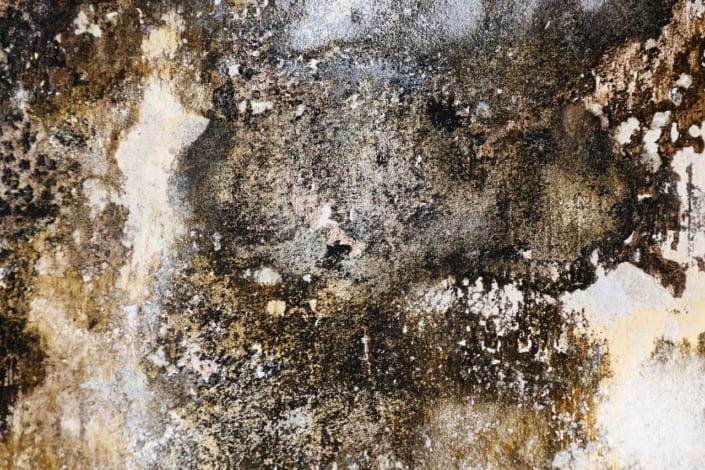
Food Sources
Molds grow inside of their food sources. They penetrate deeply into wood, insulation, drywall, carpets, underneath kitchen and bathroom sinks, etc. Anything with carbohydrates in it could be considered a food source for molds.
Moisture
Moisture is the one thing you can reasonably control when it comes to mold. A dry home equals a home with less mold growth. Keeping areas dry, especially areas that use water frequently (like bathrooms), is important to prevent mold growth.
Humidity higher than 60% gives mold a perfect environment in which to grow. The good news is you can prevent attic mold from causing problems. Controlling moisture levels stops mold growth in its tracks.
How Fast Do Molds Grow?
Once enough moisture is present, molds can begin to grow in less than 48 hours! Water from leaks, condensation, and poor ventilation can cause a ticking mold time bomb.
To learn more about our inspection process and why it’s important to pay for a mold and air quality inspection check out our post: Do You Have Mold? How to Choose Between a Paid or Free Mold Inspection.
HOW DO YOU KNOW IF YOU HAVE ATTIC MOLD?
Have you been up in your attic lately? Most people never venture into this part of their homes. Attics can easily be infested with mold for 2 primary reasons – poor ventilation and roof leaks.
Roof Leaks
One of the most common causes of mold in the attic is a leaking roof. To check for possible roof leaks, look for discoloration of insulation and wood including: the rafters, sheathing, joists, fascia boards, roof valleys, skylights, chimneys, windows, flashings, and the like. While you’re up there, make sure there are no leaks around attic plumbing stacks or air conditioners. If you have a vapor barrier, check for condensation. You may also be able to smell it. Mold has a distinctive musty odor that has been compared to stinky gym socks or a wet dog kind of smell.
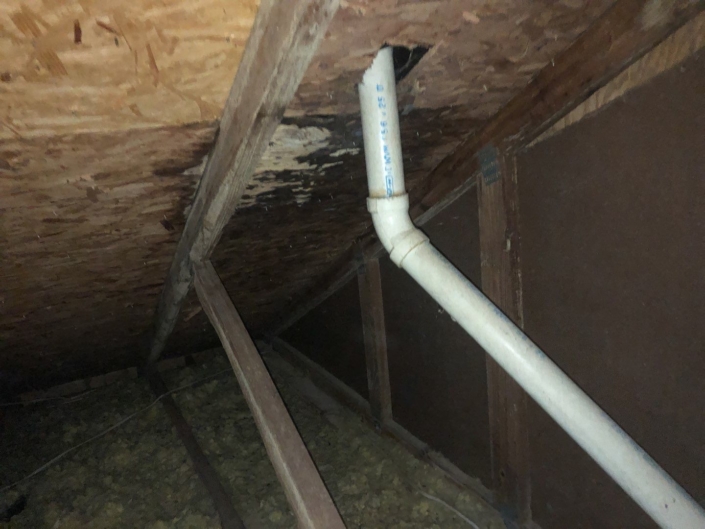
Roof penetrations are one of the most likely places to find leaks. At least twice a year, roofs should be checked for leaks. Attic mold is often caused by the buildup of moisture that can not escape. One easy way to tell if you have excessive moisture in the attic is to look at the nails. If they are rusted, you most likely have moisture and ventilation problems. Black spots and discoloration can also signify a leak and mean trouble.
Check that caulking and flashing are secure and in good shape. Repair missing or loose shingles, damage from limbs and remove any moss. While you are on the roof (or your chosen repair technician is), be sure to inspect the chimney for loose bricks, or boards. Also, check that the flashing is secure, and that no water is passing through it. Be sure a chimney cap is installed and working properly.
Poor Ventilation
Because air travels upward toward the attic, household activities such as cooking, bathing and showering will produce moisture that can make its way to the attic and become trapped. Rusted nails and discoloration of wood are clues that there is too much moisture in the attic.
For more information about water damage check out our post: Top 10 Ways to Prevent Water Damage.
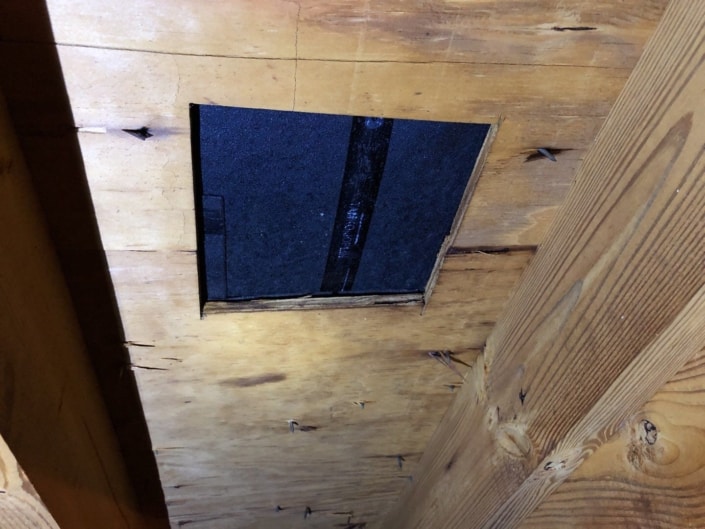
In this home, the old attic vents were covered by a new roof. The roofers did not install new vents. Mold was the result.
Why Proper Attic Ventilation is Important
Proper roof ventilation is very important in keeping your attic dry and mold free. Most homes have a passive system to circulate air through the attic. Around the ridge of your roof are soffit or eave vents that allow external air to enter the attic. This air then warms up in the attic, and leaves through can or ridge vents because heat rises. The process of air moving through the attic creates a well ventilated space, and prevents moisture and heat from being trapped.
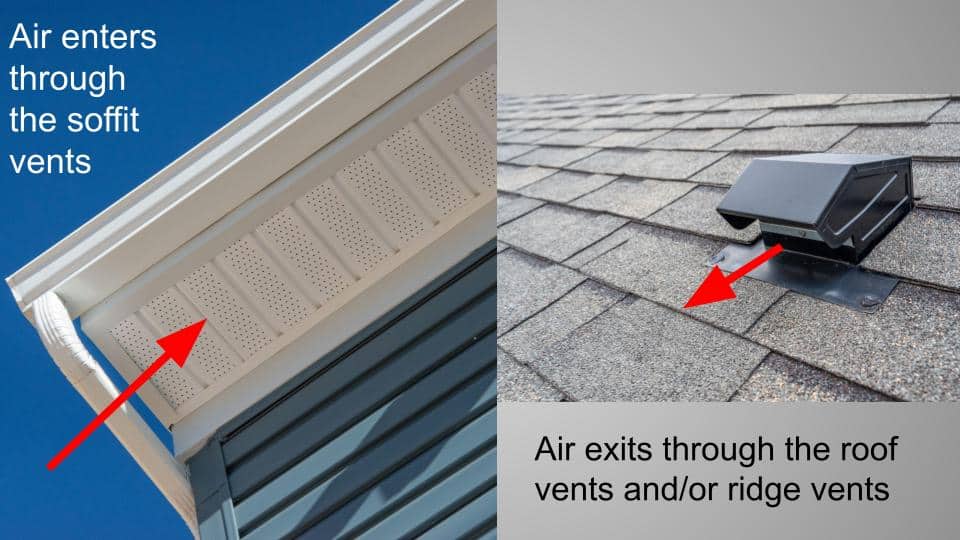
Proper ventilation of the roof depends on both sets of vents being open, so that the air can circulate.
However, when air is unable to enter or leave the attic, moisture and heat build up and encourage mold growth. If the soffit or eave vents are blocked (by paint for example), fresh air cannot enter the space. If the ridge vents or can vents are blocked (or not present), moisture and heat can build up in the space with nowhere to go. We have visited homes with mold and moisture problems where there were no ridge or can vents and others where there were soffit or eave vents were blocked. Never assume these things are in place and working properly! Be sure to include checking these vents as part of your home maintenance routine.
Other Types of Improper Ventilation
Proper roof ventilation is very important in keeping your attic dry and mold free. Most homes have a passive system to circulate air through the attic. Around the ridge of your roof are soffit or eave vents that allow external air to enter the attic. This air then warms up in the attic, and leaves through can or ridge vents because heat rises. The process of air moving through the attic creates a well ventilated space, and prevents moisture and heat from being trapped.
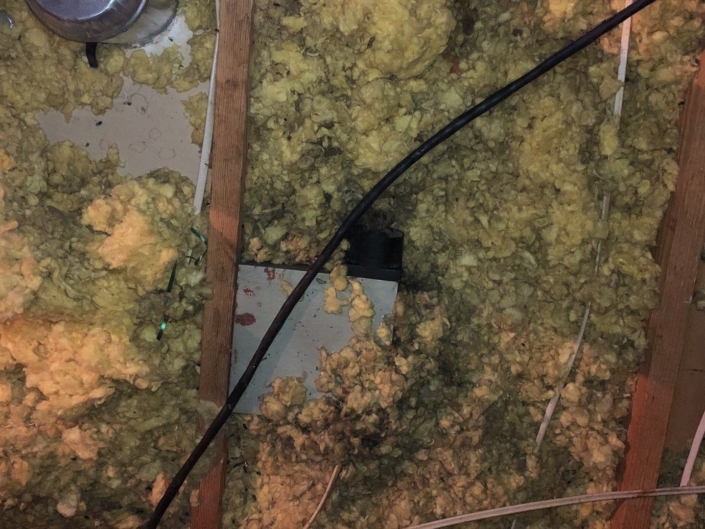
Bathroom fan vented into the attic instead of outside the home. The moist air is causing mold growth.
Other types of improper ventilation can also cause moisture problems. Improper ventilation of bathroom fans or dryer vents into the attic space can increase moisture and heat in the attic. Yes, we have seen these problems in real customer’s homes, and we have helped fix them! Our customers know we go above and beyond to find the problem and be sure it is corrected.
DOES ATTIC MOLD AFFECT YOUR HEALTH?
In one word…Yes.
Mold is an insidious, invisible predator in your home. It hides in places no one ever thinks to look like under cabinets, in crawl spaces, attics, and behind furniture. People may spend weeks, months, and even years fighting illness, and never know what they are really fighting…mold. Many of our customers find us after a recommendation from their doctor, that they may in fact have a mold problem, and not just an illness.

Mold is most often associated with allergies, but mold is much more menacing than people know. While all molds have the potential to cause irritation and allergy symptoms, molds can also cause much more dangerous health problems including: fungal poisoning and mental health problems. You can learn more about mycotoxin poisoning in our article: When Mold Is Worse Than Allergies.
To learn more about how mold can affect mental health check out our articles: Mold and Mycotoxins: Effects on the Brain and Nervous System in Adults and Effects of Mold on Children’s Health.
To learn more about one of our customer’s real homes, and how we helped solve their attic moisture problem check out our post: How Does Mold Affect Your Health?
DIY ATTIC MOLD REMOVAL VS. PROFESSIONAL ATTIC MOLD REMOVAL
If you’re familiar with our blog, you know that the first thing to do when cleaning mold is to fix the moisture problem that led to the mold growth. Until you fix the moisture problem, mold will continue to grow and spread.

Customers often ask, “Can I clean the mold myself or do I need a professional?” Our answer depends several factors including:
- how extensive the mold problem is
- what building materials, furnishings, and belongings are affected
- where the mold is located
- whether or not you mind being in confined spaces such as your crawlspace, basement, or attic
Mold is great at hiding in hard to detect locations such as in drywall and insultation. If the area of mold covers more than about 10 square feet, there is a good chance the mold problem is more than an isolated issue. If you smell a musty odor in your home you can’t identify, or have health problems associated with mold, it’s time to call in the professionals.
To get all the details check out our post: Cleaning Mold: DIY vs. Professional.
Especially if you don’t live in our service area, you should check out our post: How to Choose a Mold Removal Company. We answer every question you should ask a mold removal company, and give you the details you need to know.
DIY ATTIC MOLD REMOVAL
Now that you know when to call, let us help you know how to DIY safely. Our tips for mold removal help you know what to use, and what not to use. We can help you remove the mold safely, whether you choose to DIY or have us help you. We want to help you get back to living your best life!
What Not To Use – Bleach
The goal of mold cleaning is not to kill mold, or even to disinfect a surface or material, but rather to remove mold from a surface. Think of mold more like dirt. If you had a wall with dirt on it, would you simply spray it with bleach and consider it cleaned? Of course not.
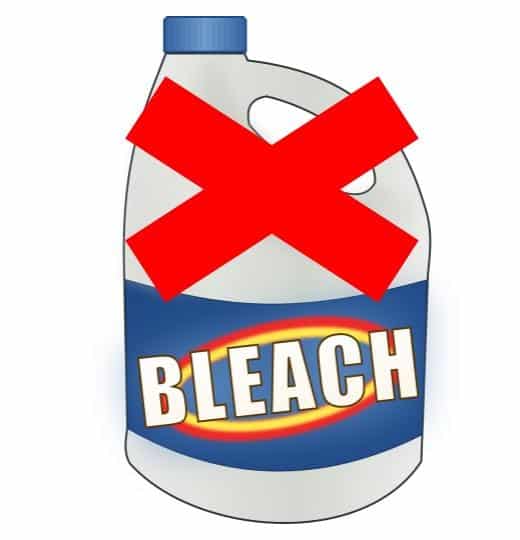
Bleach is a combination of chemicals used to kill bacteria and whiten clothes, floors, and walls. Bleach contains sodium hypochlorite which is toxic to bacteria, fish, and human beings. In fact, the Environmental Protection Agency (EPA) discourages the use of bleach and biocides for mold cleaning.15
Of course, there are more reasons to avoid bleach. Bleach is designed to kill bacteria, and will not completely remove a mold problem. Molds are fungi and they can, and will, grow back after bleaching.
DIY Attic Mold Removal – What To Wear To Clean Mold Safely
Before even choosing a cleaning product, you should know what kind of safety equipment to wear to clean a moldy surface.
The basic equipment consists of an N-95 respirator, goggles or eye protection, & protective gloves with long cuffs.25 Long pants, a long sleeved shirt and waterproof boots are important to wear as well.25 Closed toed shoes are a good substitute for boots, especially if you are working on a small area of mold.25
Mold is a respiratory irritant and allergen, so a mask with a N-95 respirator is important, especially if you know you are allergic to mold. A simple dust mask will NOT protect you from the mold spores.
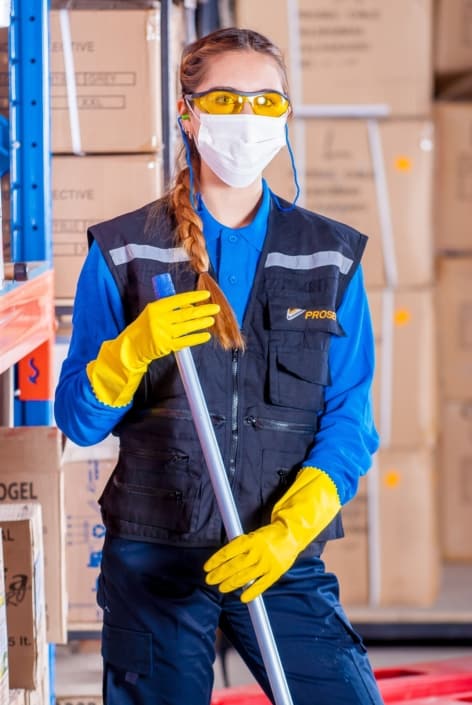
For more information about safety, visit: What to Wear before entering a Home or Building with Mold Damage by the CDC.
To learn more about face masks see our post: In-depth Guide to Face Masks: Allergies, Grass Cutting, and COVID-19.
DIY Attic Mold Removal – What To Use To Clean Mold Safely
There are 3 simple ingredients you can safely use to clean away mold in your home: white vinegar, baking soda, and hydrogen peroxide. Remember NOT to mix these ingredients! Keep reading for maximum cleaning power and safety!
What about all of the mold cleaners that are being marketed? What about the claims that a certain product kills mold, removes mold, removes stains, disinfects surfaces and prevents mold from ever returning? If it sounds too good to be true, it usually is.
To learn more about the products you use to clean your home, and how they are NOT regulated by the federal government, check out our articles: Cleaning Products – Homemade vs. Store Bought and How to Choose the Best Black Mold Removal Products.
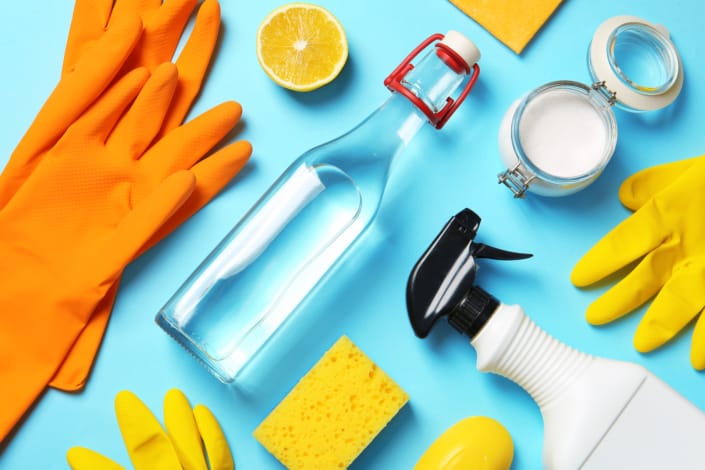
DIY Attic Mold Removal – Hard Surface Cleaning
To clean a hard surface (like a shower stall, tiles, toilet, sink, or floor), simply add hydrogen peroxide OR white vinegar to a clean, empty spray bottle undiluted. Never mix these chemicals! Choose one or the other.
Hydrogen Peroxide
When using hydrogen peroxide, spray the area to clean thoroughly, and let it sit for 10-15 minutes. Then, scrub the area, and rinse it clean with water. Repeat if needed.
White Vinegar
For white vinegar, spray the area to clean thoroughly, and let it sit for at least 15 minutes or up to one hour. Then, scrub the area, and rinse it clean with water.
Baking Soda
To use baking soda, add a teaspoon to a tablespoon of baking soda to a clean empty spray bottle and fill the bottle ¾ full of hot water. Shake to dissolve. Spray the area and use a scrub brush to clean the mold away. Then, rinse the area with clean water.
When using baking soda, it usually works best with a white vinegar spray following the baking soda, but not at the same time. The baking soda should be scrubbed away and rinsed before spraying with vinegar.
Baking soda is a base and vinegar is an acid. When they are used together, they react to form carbon dioxide gas and heat. The chemicals then are neutralized (changed to a neutral pH of 7) and have less cleaning power than they would if they had been used separately.
Essential Oils
You can add 5 to 10 drops of tea tree essential oil to the white vinegar spray to increase the disinfectant power. Tea tree essential oil is distilled from the Melaleuca alternifolia tree from Australia. The essential oil is antifungal (kills fungi), antiviral (kills viruses), and antimicrobial (kills microbes, including bacteria).
However: we advise people with allergies or asthma to use this oil with caution, as it can be irritating to the skin and lungs. To learn more about essential oils and how to use them safely check out our post: Essential Oils For A Healthy Home.
DIY Attic Mold Removal – Cleaning Softer Surfaces
Hard surfaces generally are able to be cleaned, and most of the time mold will not grow back if it is completely removed and the moisture problem has been fixed. Soft surfaces (such as carpet, drywall, upholstered furniture, etc.), are not always able to be cleaned completely enough to keep the mold from coming back.
Depending on how deep the mold penetrates the materials, upholstered furniture could be cleaned by a professional. Linens, clothes, and towels can be laundered in hot water to remove the mold, but stains may remain.
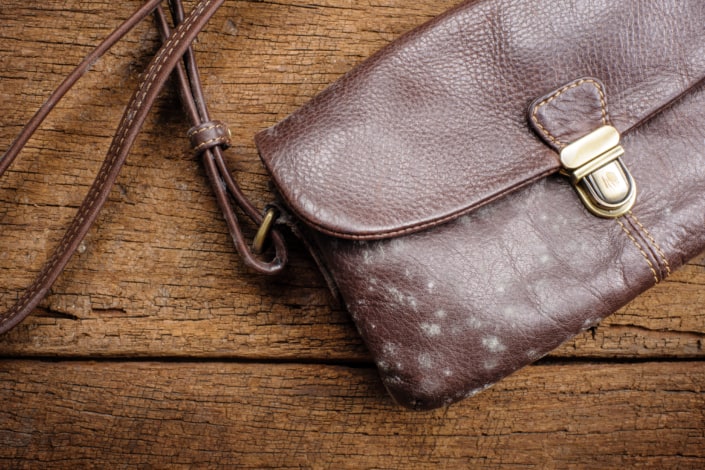
Leather tends to mold quickly in warm, damp environments such as basements.
Leather is prone to mold damage, and can be cleaned. However, leather should not be kept in a basement or location where moisture levels are high. To clean leather check out The Spruce’s Step-By-Step Guide on How to Clean Mold From Leather. You can also have significant or sentimental leather items cleaned by a professional leather cleaner.
When you have softer surfaces such as wood, insulation, carpet, drywall, and furniture that have been contaminated with mold, it’s time to call a professional. It is very difficult to tell just how much of the surface has really been invaded by the mold just by looking because mold grows inside of its food sources.
Best Commercially Available Products for DIY Attic Mold Removal
There are 2 commercially available mold removal products that we recommend. Both are cleaners that are safe to use in your home and near children or pets. Remember that you should always wear personal protective equipment when cleaning mold of any color, no matter how safe your cleaner may be.

The best mold removal products are those that are non-toxic and safe to use around children and pets.
The first is Concrobium Mold Control Cleaner. You can check out the EWG’s Guide to Healthy Cleaning | Concrobium Mold Control Cleaner Rating here.
To purchase Concrobium Mold Control Cleaner from Amazon, click here.
The other product we recommend has not been reviewed by EWG, however, it is an excellent and safe product that we can highly recommend. Bioesque Botanical Disinfectant Solution kills fungi and mold within 3 minutes. It also kills bacteria and viruses including COVID-19.
To learn more about this product and its safety check out the company’s website at: Bioesque’s Botanical Disinfectant Solution.
To purchase Bioesque Botanical Disinfectant Solution from Amazon, click here.
Tips For Cleaning Mold
- Remember that your goal is not to kill the mold spores, but to remove them. When they have been removed completely they cannot grow back.
- Ventilate, ventilate, ventilate! Ventilation is important during cleaning, so that any disturbed spores exit the building. Close and tape off doors to the rest of the house and use a box fan in a window pointing out while cleaning. This will prevent spores from invading the rest of the home, and remove them from the air of the room to be cleaned.
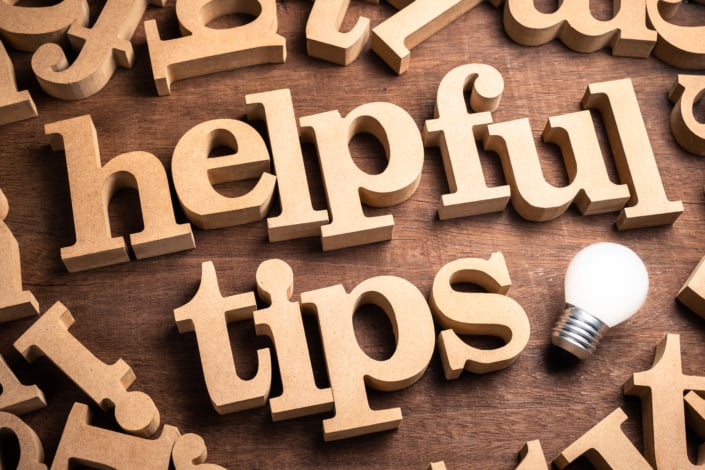
- Be sure to spray and then wipe all surfaces with a damp rag. Dry wiping will disturb spores and send them into the air! Airborne spores can regrow in new locations, and cause even more mold to grow. Mold spores are not visible to the naked eye, so be sure to cover all surfaces with your cleaner of choice, even if they look ‘clean’.
- Do NOT use a vacuum to clean mold unless you have a vacuum with a HEPA filter. HEPA stands for high-efficiency particulate air, which means the filter can stop most particles of dust, pet dander, allergens, etc. that are 0.3 microns or larger and keep them from being put back into the air. The HEPA filter should be changed periodically to increase efficiency. Use with caution as mycotoxins may not be filtered out even when using a HEPA vacuum. Remember that you will eventually have to empty the vacuum, and it will be filled with the mold. Vacuuming is not the best method of removal.
No matter what product you choose, be sure to wear proper safety equipment, ventilate the room to the outdoors, and follow all product directions.

WHAT ARE THE STEPS OF PROFESSIONAL ATTIC MOLD REMOVAL?
Let’s say you have a big mold problem. There is definitely more than 10 square feet of mold, you are having health issues, or you have decided DIY is not for you. What happens when you call a professional? When you have a mold remediation company come to your home, you need to know just what to expect.
Especially if you don’t live in our service area, you should check out our post: How to Choose a Mold Removal Company. We answer every question you should ask a mold removal company, and give you the details you need to know.
5 Steps for Professional Attic Mold Removal or Remediation
1. Define The Scope
The work begins with an Indoor Air Quality Assessment. Your inspector will define the extent of the necessary work and what may or may not need to be done. The inspector should talk you through all your options and tailor a plan that fits your needs and your budget.
Be sure to ask a lot of questions at this stage. The company you hire for an Indoor Air Quality Assessment should charge you for this service. Never expect a company that offers a ‘free’ inspection to do a good job getting all the mold!
Not all mold removal and remediation companies are created equal. Before hiring anyone you should ask questions, a lot of questions. If they can’t answer these questions or answer them to your satisfaction… Don’t hire them! For all the details check our our post: How to Choose the ‘Best’ Mold Removal Company. We help you know all the questions to ask and all the correct answers!
2. Protect The People
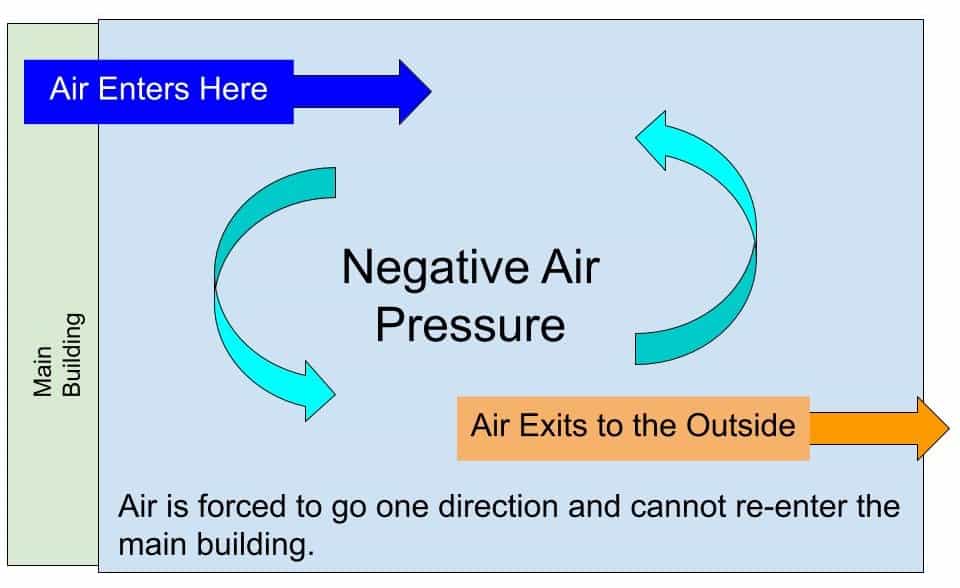
Keeping your family and the work crews safe is our top priority. This means preparing your home for the work that needs to be done. Branch Environmental uses methods such as containment walls and negative air to keep your home safe, and we’ll let you know if you can or cannot be in the home during the work. Check out our post Branch Environmental Keeping You Safe to learn more.
3. Correct Moisture Problems
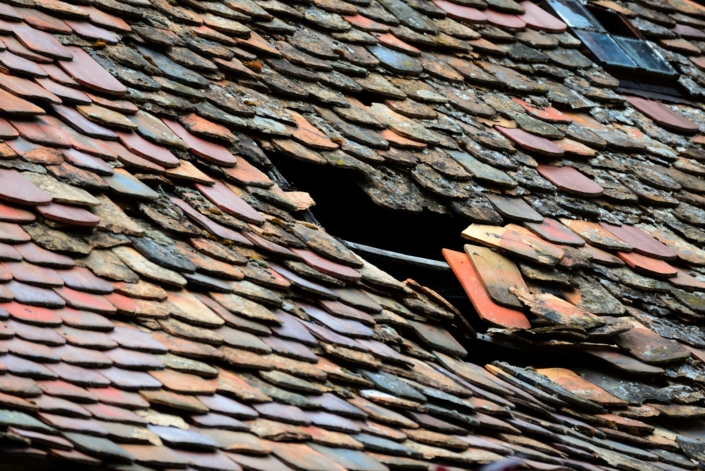
Roof leaks are not always this dramatic. Small leaks over time can be just as damaging.
Removing or correcting the source of moisture is a vital part of the remediation process to ensure mold does not return. This may be handled by a contractor outside the scope of the mold remediation. Once walls or floors are opened up, now is the time to address plumbing issues and other leaks. Leaks are problems that can be remedied quickly if routine maintenance checks are performed on your home. The longer a leak is present, the more mold will grow. Prevention is worth nine tenths of the cure they say!
To learn how to prevent water leaks and to find the most likely spots for leaks in your home check out our post: Top 6 Types of Water Damage and How to Avoid Them.
4. Remove The Mold
The work will start by removing and discarding non-salvageable material. Next, the materials that can be saved are cleaned. At Branch Environmental, we always use safe and environmentally friendly products. There is no reason to replace one environmental toxin with another, such as bleach. Be sure to ask your mold remediation contractor questions about the chemicals they use to remove mold and if they are environmentally friendly.
5. Restoration
If walls, floors, or ceilings were removed during the remediation, the final step will be reinstalling what was taken out. Drywall, carpet, and other soft materials are the most likely materials that will have to be replaced. However, even framing or complete ceilings may have to be replaced depending on the level of damage.
THIS SOUNDS EXPENSIVE!

Most people rarely plan for the expense of mold removal, so here at Branch Environmental, we are careful to help control costs and manage your expectations from the beginning. With a clear understanding of the problem, we can work with you to create a remediation protocol that fits your needs.
The best place to start is with a paid Indoor Air Quality Assessment. This step will give you all the information you need to move forward. You will discover exactly how extensive your problem is, and what is necessary to solve it.
WE’RE HERE WHEN YOU NEED US
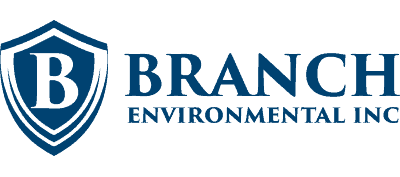
Call Branch Environmental. We’re experts not only at mold removal, but at determining and remediating the underlying causes. From hidden mold sources to major contaminants, we can identify exactly what is going on in your home and rid it of environmental toxins, often for good.

